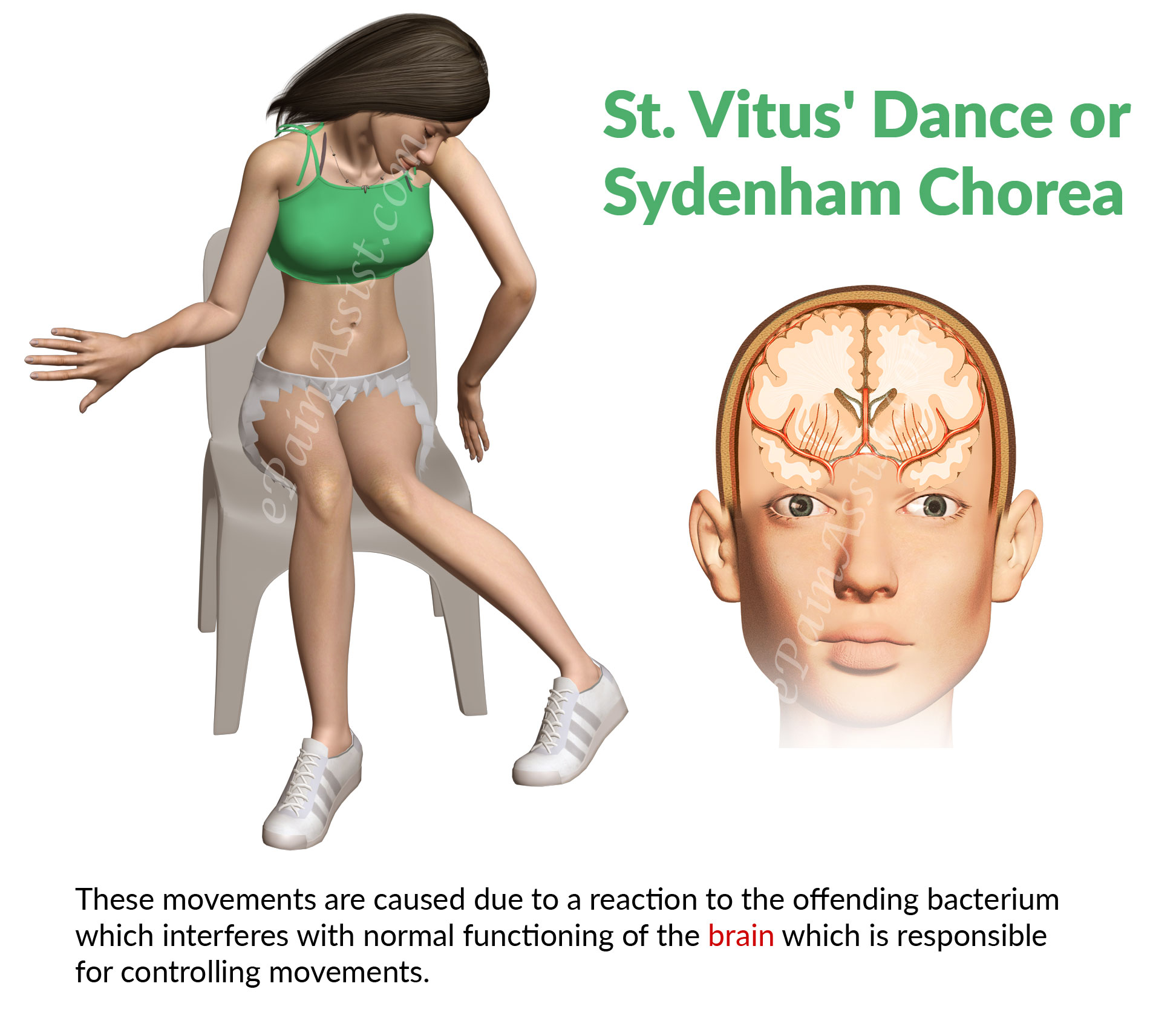What Is St. Vitus’ Dance or Sydenham Chorea?
St. Vitus’ Dance or Sydenham Chorea is a neurological medical condition, which usually develops in the childhood due to infection caused by Group A beta-hemolytic streptococcus.1 This is the same bacterium which is responsible for causing rheumatic fever. The classic feature of St. Vitus’ Dance or Sydenham Chorea is involuntary rapid and irregular movements of arms, legs, and the facial muscles. St. Vitus’ Dance or Sydenham Chorea is found more in girls more than boys and is known to develop between the ages of 5 and 15. There are some cases of development of a sore throat before the actual symptoms begin. St. Vitus’ Dance or Sydenham Chorea can strike even after the infection has cleared. The onset of symptoms can be gradual or all at once and may include non-directional movements, weakness of the muscles, frequent falling, slurring of speech, and problems with concentration. A child with St. Vitus’ Dance or Sydenham Chorea can have just a mild abnormality with gait or may have involuntary movements of the extremities which may be severe enough to render the child disabled. These movements are caused due to a reaction to the offending bacterium which interferes with normal functioning of the brain which is responsible for controlling movements. Due to better medical facilities and fast acting medications this condition is quite rare in the United States but is still a problem in third world nations.
What Causes St. Vitus’ Dance or Sydenham Chorea?
The main cause of St. Vitus’ Dance or Sydenham Chorea is a bacterium that causes rheumatic fever.1 Hence, if a child has had rheumatic fever then more likely than not the child will have Sydenham Chorea. St. Vitus’ Dance or Sydenham Chorea occurs before puberty in girls, but there have been some cases of St. Vitus’ Dance or Sydenham Chorea in boys as well.
What Are The Symptoms of St. Vitus’ Dance or Sydenham Chorea?
Some of the symptoms of St. Vitus’ Dance or Sydenham Chorea are:
- Handwriting changes
- Involuntary jerking movements of the extremities and the facial region 2
- Fine motor dis-coordination
- Emotional instability
- Diagnosis of rheumatic fever
How Is St. Vitus’ Sance or Sydenham Chorea Diagnosed?
As stated, if a child is affected with St. Vitus’ Dance or Sydenham Chorea he or she will have sore throat some weeks before the actual symptoms begin. In order to confirm the diagnosis of Sydenham Chorea, the physician may conduct blood tests to look for the offending bacterium which causes Sydenham Chorea.3 Blood tests may also be done to find if the child has a strep infection.
How Is St. Vitus’ Dance or Sydenham Chorea Treated?
As of today, there is no clear cut treatment for Sydenham Chorea. In children who have an extremely mild form of Sydenham Chorea, the most recommended treatment is adequate bed rest at the time of the episode of involuntary movements. If the movements are severe enough to prohibit the child from resting the patient may be given tranquilizers like benzodiazepines so that the patient can sleep and get adequate rest. Sometimes, antiepileptics like valproic acid are also prescribed. Physicians also highly recommend that the child take penicillin for a course of approximately 10 years so that rheumatic fever does not recur. Antibiotics to kill the bacteria will also be prescribed so that future recurrences of rheumatic fever may be avoided. In severe cases of Sydenham Chorea, frequent sedation may be required.
What Is The Prognosis of St. Vitus’ Dance or Sydenham Chorea?
Majority of the children with St. Vitus’ Dance or Sydenham Chorea outgrow this completely and completely recover even though there may be a small population of children who may have persisting symptomatology even after they grow up which may make them disabled. The symptoms of St. Vitus’ Dance or Sydenham Chorea may continue for a period of three to six weeks but in some cases it may continue for well over a few months. In rare cases, there may be some cardiac issues that may arise due to Sydenham Chorea. Some research suggests that St. Vitus’ Dance or Sydenham Chorea may result in later development of obsessive-compulsive disorders, attention deficit disorders, and autism, although further research regarding this is still ongoing.
Is There Some Research Being Done for St. Vitus’ Dance or Sydenham Chorea?
There are many institutes in the United States which are conducting research on Sydenham Chorea. At present researchers are in the process of identifying what factors predispose a child to St. Vitus’ Dance or Sydenham Chorea after an infection.
Also Read:

